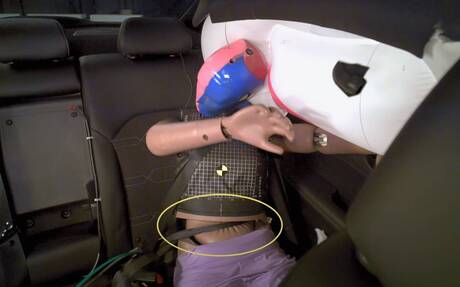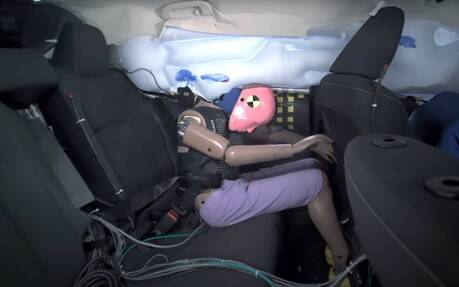Most Small Cars Don’t Provide Good Protection for Rear Passengers
Sitting in the back of a small car not only means sacrificing a fair amount of space. It also increases the risk of injury in a collision.
Of course, you probably knew that already, but the U.S. Insurance Institute for Highway Safety (IIHS) recently proved it with its updated moderate overlap front crash test, where half of the car’s front end strikes an obstacle.
- Also: These Are the Safest Vehicles in 2023, IIHS Says
- Also: Compact Cars Get Mixed Reviews in New IIHS Side-Impact Test
None of the five small cars tested by the IIHS earned a good rating. The Honda Civic and Toyota Corolla were rated “acceptable,” while the Kia Forte, Nissan Sentra and Subaru Crosstrek were rated “poor.”
“In all the small cars we tested, the rear dummy ‘submarined’ under the seat belt, causing the lap belt to ride up onto the abdomen and increasing the risk of internal injuries,” said IIHS President David Harkey.

In the three poor-rated vehicles, measurements taken from the rear dummy (which represents a small woman or 12-year-old child) also showed a moderate or high risk of head, neck or chest injuries.
The IIHS last year updated its moderate overlap front crash test after research showed that in newer vehicles the risk of a fatal injury is now higher for belted occupants in the rear than for those in front.
Now, don’t assume that rear passengers in SUVs are necessarily in a safer place. Earlier this year, the IIHS conducted new tests with 13 different midsize SUVs and only four of them managed to get a good rating for rear-seat occupant protection.
“The front seat has become safer because of improved airbags and advanced seat belts that are rarely available in back,” the IIHS noted. “Even with these developments, the back seat remains the safest place for young children, who can be injured by an inflating front airbag.”
